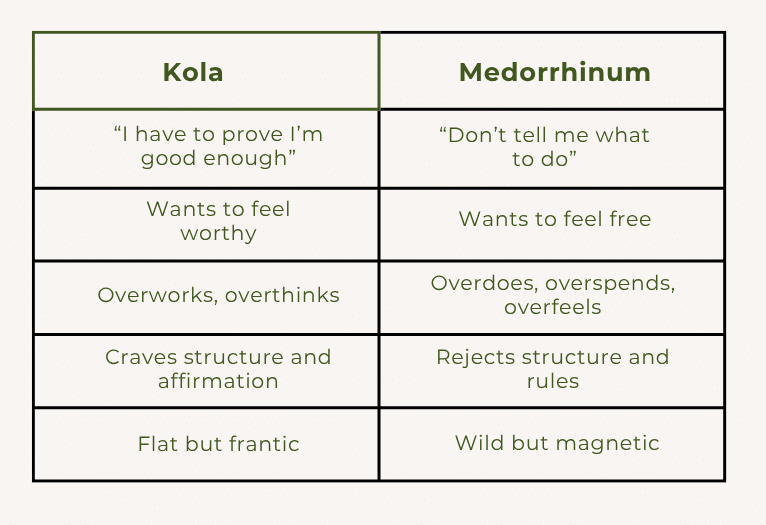
Mistletoe (Viscum album)
Mistletoe (Viscum album) Every Christmas, mistletoe hangs above doorways, inviting

Sometimes in practice, we meet a patient who is high-energy, sensitive, and burning out. They might be intense, forgetful, or clairvoyant. They stay up late, think too much, live fast, and then hit a wall.

Homeopath and CHE Community Manager
At first glance you might reach for Medorrhinum, and often it works. But what if the case almost fits, yet the remedy doesn’t hold?
It might be time to think about Kola.
Let’s explore the differences between these two fast-burning types, because while they may look similar on the surface, their roots are very different.
In his article “Never Good Enough” (Spectrum of Homeopathy 2/2010), Terje Wulfsberg describes Kola as a remedy for people who are constantly trying to prove themselves. Deep down, they feel like they don’t measure up.
These patients might look successful and capable on the outside, but inside, they feel like they’re falling short. So they push themselves harder. They take on more. They keep going until their nervous system is overstimulated and frayed.
Wulfsberg describes them as feeling:
‘Inadequate and dissatisfied with their efforts… constantly striving to perform, but never feeling truly satisfied.’
They often have a background of emotional deprivation; early disconnection from caregivers, lack of nurturing, or no one really ‘seeing’ them. The result? A deep hunger to feel valued, and a belief that being busy or productive will make them feel whole.
Medorrhinum, on the other hand, comes from a very different place. These patients don’t overwork because they feel inadequate, they push boundaries because they want freedom. They reject limits. They want intensity, thrill, sensation, pleasure, escape.
Where Kola is tense, wired, and full of mental noise, Medorrhinum is impulsive, emotional, and unpredictable.
Medorrhinum patients often had chaotic or boundary-less early lives, and they still live as though the rules don’t apply to them. They can be passionate, disorganised, bold, sexual, scattered, and emotionally intense. They’re driven by a need to feel alive, and they don’t care if that means taking risks.
Both remedies can be forgetful, but in very different ways.
Another key difference is emotional expression:
Let’s simplify their core motivations:

Choose Kola when:
Choose Medorrhinum when:
Kola and Medorrhinum might both live fast, think fast, and burn out. But one is pushing from emptiness (Kola), and the other is pushing against limits (Medorrhinum).
Knowing the difference helps us prescribe more accurately, and reach the core of what’s really driving the patient’s pattern.
So next time your usual Medorrhinum case doesn’t resolve, pause and ask:
“Is this about escaping limits… or proving self-worth?”
That one question might lead you to Kola, the remedy they really needed.
If you found this post helpful, you’ll love what’s waiting for you inside CHE Pro; our professional membership for homeopaths who want to keep growing, learning, and feeling supported in practice.
Whether you’re newly qualified or decades into practice, CHE Pro is your home for ongoing support and brilliant homeopathic education.
We’d love to welcome you in.
Disclaimer
The content shared here is intended for informational purposes only and should not be considered a replacement for professional medical advice, diagnosis, or treatment from a qualified and licensed healthcare provider. The views and opinions expressed in this presentation are those of the presenter and do not necessarily represent those of CHE or any affiliated organizations.

Mistletoe (Viscum album) Every Christmas, mistletoe hangs above doorways, inviting

Your Guide to Calc Tissue Salts Tissue salts, also known

Natrum Muriaticum vs Nitric Acid: When Defensive Minds Look Alike
